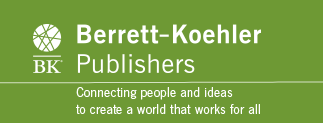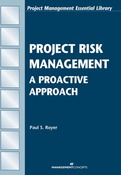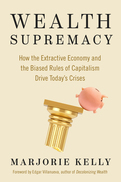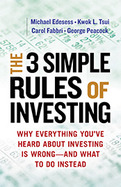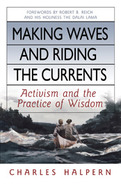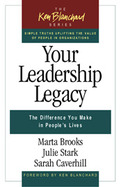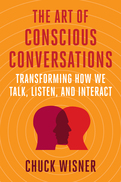2023
This bold manifesto exposes seven myths underlying wealth supremacy—the bias that institutionalizes infinite extraction of wealth by and for the wealthy and is the hidden force behind economic injustice, the climate crisis, and so many other problems of our day:
The Myth of Maximizing—No amount of wealth is ever enough.
The Myth of Fiduciary Duty—Corporate managers' most sacred duty is to expand capital.
The Myth of Corporate Governance—Corporate membership must be reserved for capital alone.
The Myth of the Income Statement—Income to capital must always be increased, while income to labor must always be decreased.
The Myth of Materiality—Profit—that is, material gain-alone is real, while social and environmental damages are not.
The Myth of Takings—The first duty of government must be the protection of private property.
The Myth of the Free Market—There should be no limits on the sphere of influence of corporations and capital.
Kelly argues instead for the democratization of ownership: public ownership of vital services, worker-owned businesses, and more. And she sketches the outlines of a nonextractive capitalism that would be subordinate to the public interest. This is an ambitious reimagining of the very foundations of our economy and society.
Explains why the most common investment advice is misleading, useless, or just plain wrong
* Proves that investing is easy if you follow three simple rules and use a few basic investments
* Explains why the most common investment advice is misleading, useless, or just plain wrong
* Written by a team of veteran financial industry insiders
Personal finances can be a huge source of stress. And confusing and complicated advice from the financial industry, which is supposed to be helping, just makes it worse-and is a reason why many investors are falling further and further behind.
But investing is actually simple, maybe more simple than ever before. As the authors of this clear, practical, and enlightening book-part financial guide, part exposé-prove, there are just three simple rules you need to follow and just a few investment products that are necessary for an ideal portfolio-with perhaps a few optional ones that might help and won't hurt. That's it.
But what about the advice of investment gurus, financial industry pundits, advisors, journalists, and academics? The authors debunk the financial industry's Seven Deadly Temptations-including trying to beat the market, investing via the latest "scientific" financial theories, and succumbing to the lure of expensive and complex-sounding investments.
Whether you are a hesitant first-timer, an experienced veteran, or even a professional institutional investor, this book will help you make wise selections in your 401(k)s and create portfolios for all seasons. And as an added benefit, the authors explain how turning your back on convoluted investment products reduces systemic risk to the overall financial system and deprives Wall Street of some of its undeserved profits, thereby curbing its unhealthy political influence.
This book is about working for a more just, compassionate, and sustainable world while cultivating the wisdom that supports and deepens this work.
Charles Halpern is a social entrepreneur with a remarkable record of institutional innovation. He founded the Center for Law and Social Policy, the nation's first public interest law firm, litigating landmark environmental protection and constitutional rights cases. As founding dean of the new City University of New York School of Law he initiated a bold program for training public interest lawyers as whole people. Later, as president of the $400 million Nathan Cummings Foundation, he launched an innovative grant program that drew together social justice advocacy with meditation and spiritual inquiry.
In his years of activism, he had a growing intuition that something was missing, and he sought ways of developing inner resources that complemented his cognitive and adversarial skills. These explorations led him to the conviction that what he calls the practice of wisdom is essential to his effectiveness and well-being and to our collective capacity to address the challenges of the 21st century successfully.
With wit and self-deprecating humor, Halpern shares candid and revealing lessons from every stage of his life, describing his journey and the teachers and colleagues he encountered on the way a cast of characters that includes Barney Frank and Ralph Nader, Ram Dass and the Dalai Lama. Making Waves and Riding the Currents vividly demonstrates the life-enhancing benefits of integrating a commitment to social justice with the cultivation of wisdom. It is a real-world guide to effectively achieving social and institutional change while maintaining balance, compassion, and hope.
Through an insightful parable, Your Leadership Legacy shows how to create a positive, empowering legacy that will endure and inspire. You'll learn that, as a leader, the legacy you live is the legacy you leave. Three Leadership Imperatives—dare to be a person, not a position; dare to connect; and dare to drive the dream—will guide you in creating a positive and lasting legacy.
Whatever your position, if you influence change in the lives of those around you, you and engaged in an act of leadership. And if you are a leader in any sense, you are creating a legacy as you live your daily life. Your leadership legacy is the sum total of the difference you make in people's lives, directly and indirectly, formally and informally. Will you consciously craft your legacy or simply leave it up to chance? What can you do to create a positive, empowering legacy that will endure and inspire?
Through an insightful parable, Your Leadership Legacy shows how to create a positive, empowering legacy that will endure and inspire. Doug Roman is a brash, thirty-something CEO heir apparent who assumes he will just waltz into the job after the death of the former CEO, his beloved Aunt Nan. But he must first embark on a journey to learn the three le adership imperatives that will prepare him to shape his leadership legacy. Your Leadership Legacy shows that leaving a lasting legacy is about more than just professing values -- you must demonstrate them by the way you live.
We live in conversations like fish live in water-we're in them all the time, so we don't think about them much. As a result, we often find ourselves stuck in cyclical patterns of unproductive behaviors. We listen half-heartedly, react emotionally, and respond habitually, like we're on autopilot.
This book is a practical guide for thoughtfully reflecting on conversations so we can avoid the common pitfalls that cause our relationships and work to go sideways. Chuck Wisner identifies four universal types of conversations and offers specific advice on maximizing the effectiveness of each:
Storytelling-Investigate the stories we tell ourselves about ourselves and others
Collaborative-Explore the way our stories and other people's stories interact
Creative-See new possibilities and discover unforeseen solutions
Commitment-Make promises we know we can keep
These conversations unfold sequentially: our awareness of our and others' stories transforms our ability to listen and collaborate, which opens our thoughts to creative possibilities, guiding us toward mindful agreements.
Our conversations-at home, at work, or in public-can be sources of pleasure and stepping-stones toward success, or they can cause pain and lead to failure. Wisner shows how we can form a connection from the very first conversation and keep our discourse positive and productive throughout any endeavor.
